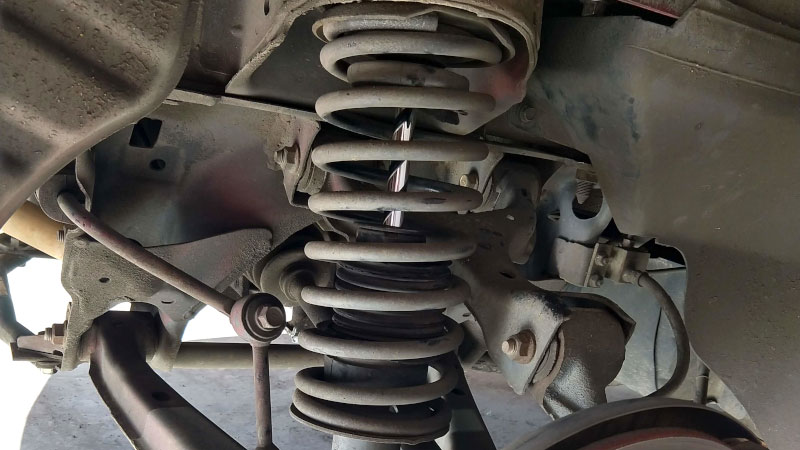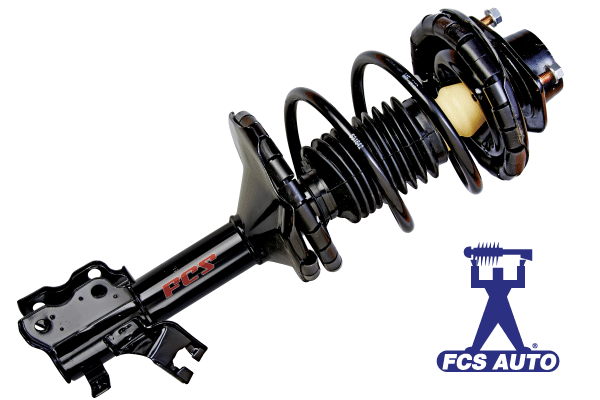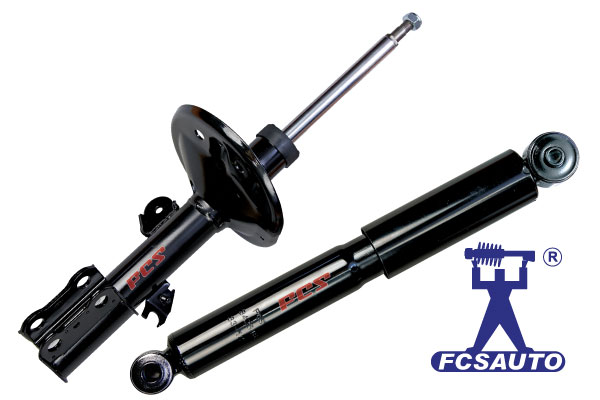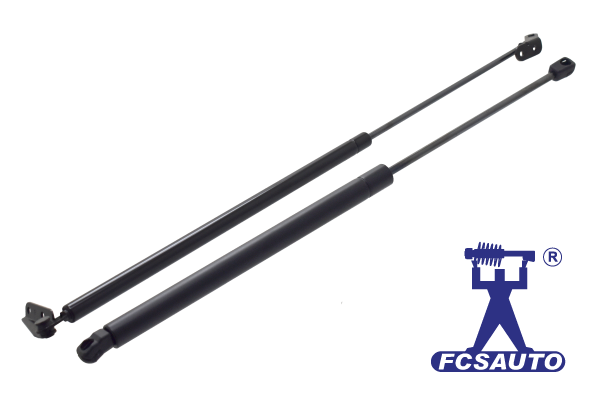Even the best-maintained roads have minor dips that create continuous movement in the suspension. The movement is controlled by the spring and dampener where the spring compresses and releases the energy into the body, dampener, or road.*
It’s not necessarily the amount of travel that matters, but the frequency of the cycles. As a suspension exceeds 80,000 miles, the number of cycles could be in the trillions. This is why springs wear out and need to be replaced.*
How Worn Strut Springs Can Affect Ride Height

Worn strut springs can have a significant impact on the ride height of a vehicle. The strut springs, also known as coil springs, provide support and suspension to the vehicle’s weight. They help maintain the proper ride height, which is the distance between the ground and the chassis of the vehicle.
When strut springs become worn, they can lose their elasticity and start to sag or compress. This can cause a reduction in the ride height of the vehicle. As the springs lose their ability to support the weight of the vehicle, it may lower closer to the ground. This can result in a noticeable decrease in the clearance between the vehicle’s body and the road surface.
Conversely, if the worn strut springs are excessively compressed, they may cause the vehicle to ride higher than normal. This can lead to an increased ride height, which can affect the vehicle’s stability, handling, and overall driving experience.
Key Issues With Reinstalling Old Worn Springs
- On high-mileage vehicles, when the struts are replaced, the performance of the springs no longer matches that of the new replacement strut.*
- Tire wear, steering and handling can also be affected by ride height on vehicles with worn springs. If the chassis is sagging on one side, or in the front or back, weak springs are the likely culprit. Weak springs can affect both camber and caster, which can result in a steering pull, a change in steering effort, as well as uneven tire wear.*
- Weak springs are also more likely to fail when a new replacement strut is installed. Strut springs on most late-model vehicles are thinner to reduce weight and have an outer plastic coating to protect the metal from corrosion. If the outer coating is cracked or damaged, corrosion can prematurely form a weak spot on the spring, which can potentially cause the spring to break over time.*
*Source: Brake & Front End
Key Advantages of Replacing Worn Struts with New Complete Strut Assemblies

Safety:
- Full Control of the Vehicle
- Shorter Braking Distance
- Improved Steering Stability
- Reduce Chances of Bottoming out

Improved Performance:
- Suspension & Steering Geometry are in Sync.
- Handles the Worst Road Conditions
- Restores Vehicles Ride Back to OE Specifications
- Absorbs Harsh, Damaging Road Impact

Reduce Future Repair Costs:
- Reduces Premature Tire Wear
- Less Wear on Tie Rods, Control Arms, Ball Joints and other Suspension parts
- Reduces Brake Replacement Frequency
- Save Fuel with Less Vehicle Drag
Conclusion/Take Away
Often the best solution is to fix the cause, not just the symptom by replacing worn struts with FCS new complete strut assemblies. This will help to restore your vehicle’s ride height and performance back to OE specifications.






